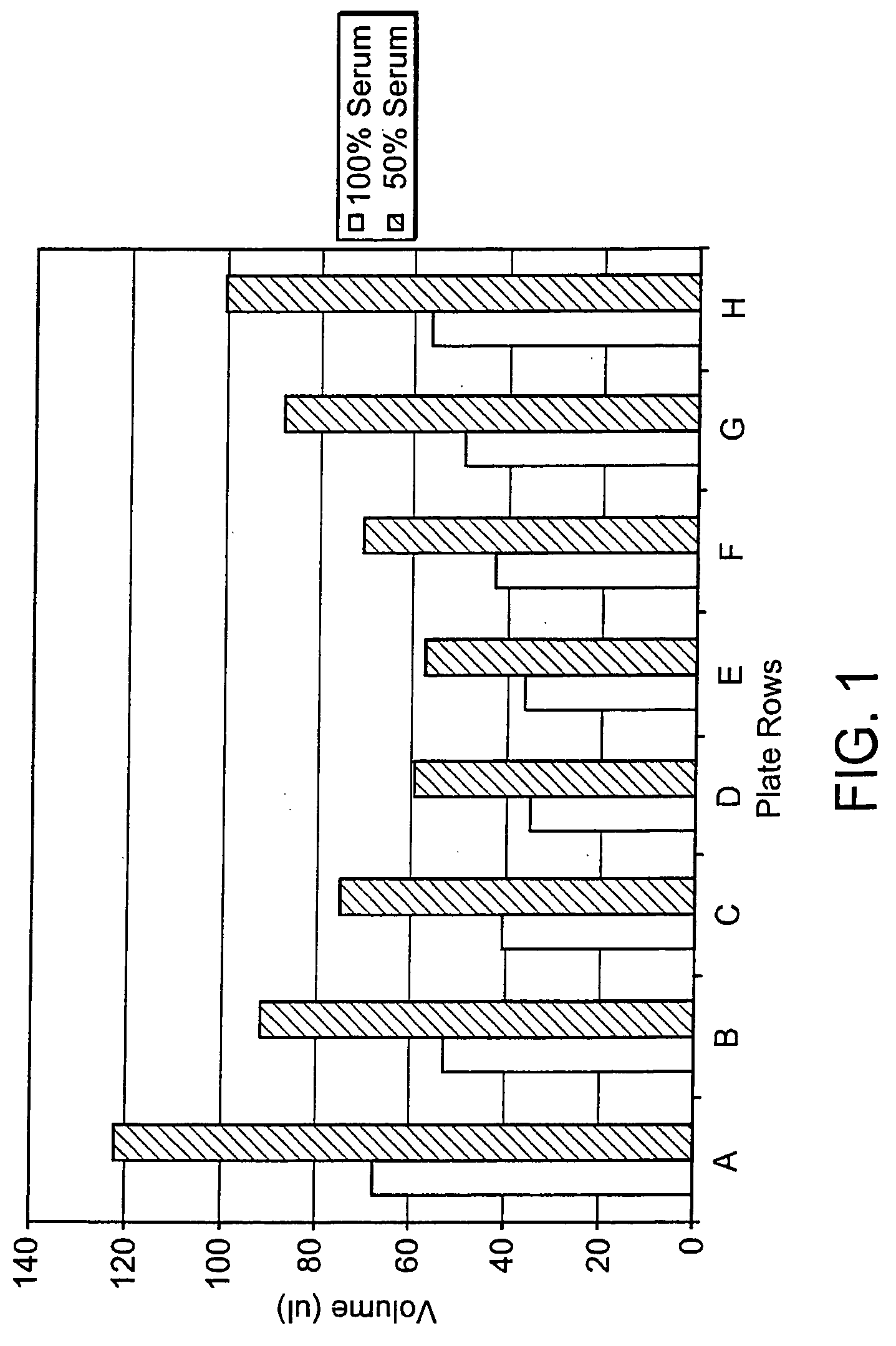Methods for filtering fluids
a technology of filtering fluid and filtering medium, which is applied in the field of filtering fluid methods, can solve the problems of long time for filtration of some viscous samples, especially serum or plasma, and insufficient homogeneous distribution of filtrate volume through the plate, so as to achieve uniform filtering volume, improve filtering average volume, and reduce the effect of well-to-well filtering volume variability
- Summary
- Abstract
- Description
- Claims
- Application Information
AI Technical Summary
Benefits of technology
Problems solved by technology
Method used
Image
Examples
Embodiment Construction
[0031]FIG. 2 illustrates a filtration well plate given generally as 10. The filtration well plate 10 has a housing 12 containing a plurality of wells 18. Typically, 2, 6, 8, 12, 24, 48, 96 or 384 wells are in each plate 10. The wells 18 can form an array having rows 14 and columns 16. In a 96 well plate, the rows 14 of wells 18 can have a total of eight rows, labeled A-H, and the columns 16 of wells 18 can have a total of twelve columns, labeled 1-12. A filtration well plate having these dimensions provides a total of ninety-six individual wells 18 which can form an array within a single plane. The face of the well plate 10 forms a major plane 15 of the plate 10. The filtration well plate 10 is positioned on top of a collection well plate 19, which allows collection of a filtered fluid, as shown in FIG. 3.
[0032]FIG. 4 illustrates a single well 18. The well 18 includes a storage chamber 20 on top of a filtrate collection chamber 22. A connector 24 can be located between the storage ...
PUM
| Property | Measurement | Unit |
|---|---|---|
| angle | aaaaa | aaaaa |
| membrane angle | aaaaa | aaaaa |
| angle | aaaaa | aaaaa |
Abstract
Description
Claims
Application Information
 Login to View More
Login to View More - R&D
- Intellectual Property
- Life Sciences
- Materials
- Tech Scout
- Unparalleled Data Quality
- Higher Quality Content
- 60% Fewer Hallucinations
Browse by: Latest US Patents, China's latest patents, Technical Efficacy Thesaurus, Application Domain, Technology Topic, Popular Technical Reports.
© 2025 PatSnap. All rights reserved.Legal|Privacy policy|Modern Slavery Act Transparency Statement|Sitemap|About US| Contact US: help@patsnap.com



